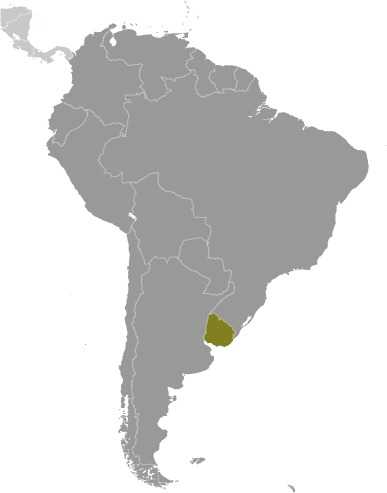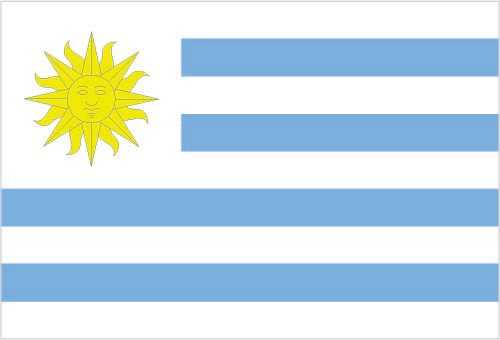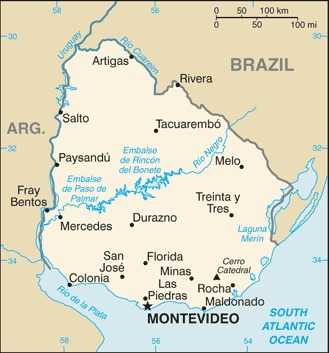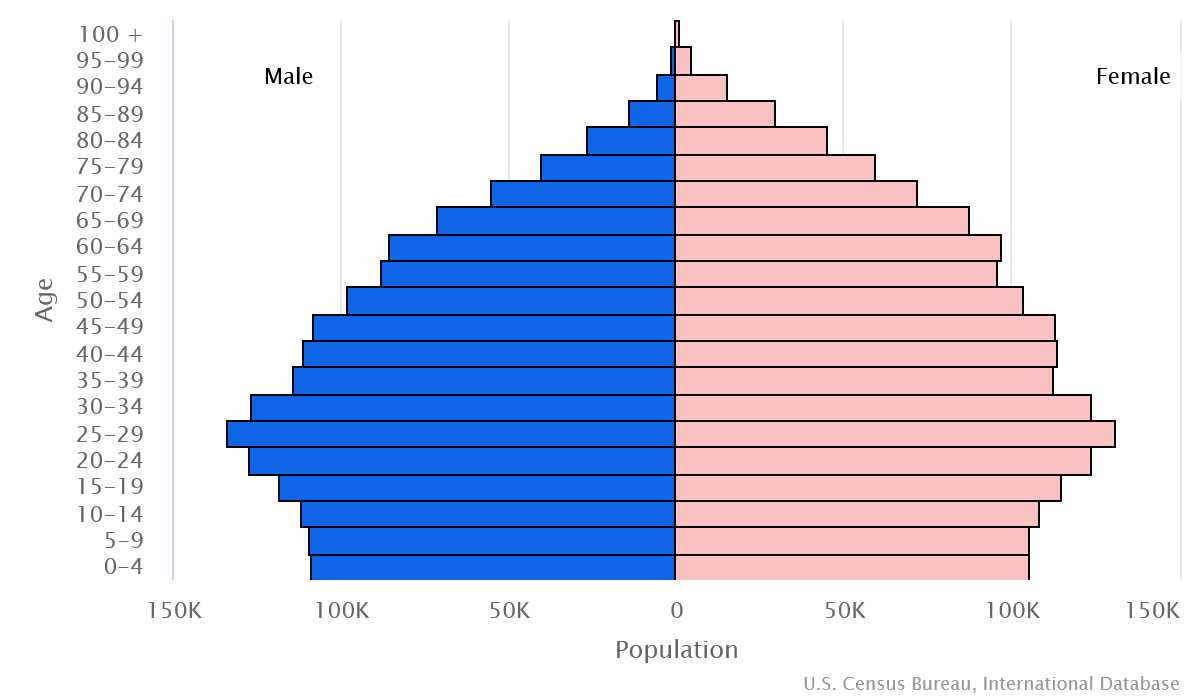Introduction
Background
The Spanish founded the city of Montevideo in modern-day Uruguay in 1726 as a military stronghold, and it soon became an important commercial center due to its natural harbor. Argentina initially claimed Uruguay, but Brazil annexed the country in 1821. Uruguay declared its independence in 1825 and secured its freedom in 1828 after a three-year struggle. Uruguay's political and labor conditions are among the freest on the continent.
Geography
Area
total : 176,215 sq km
land: 175,015 sq km
water: 1,200 sq km
Climate
warm temperate; freezing temperatures almost unknown
Natural resources
arable land, hydropower, minor minerals, fish
People and Society
Population
total: 3,425,330
Ethnic groups
White 87.7%, Black 4.6%, Indigenous 2.4%, other 0.3%, none or unspecified 5% (2011 est.)
Languages
Spanish (official) (the Rioplatense dialect is the most widely spoken dialect)
Religions
Roman Catholic 36.5%, Protestant 5% (Evangelical (non-specific) 4.6%, Adventist 0.2%, Protestant (non-specific) 0.3%), African American Cults/Umbanda 2.8%, Jehovah's Witness 0.6%, Church of Jesus Christ 0.2%, other 1%, Believer (not belonging to the church) 1.8%, agnostic 0.3%, atheist 1.3%, none 47.3%, unspecified 3.4%
Roman Catholic 42%, Protestant 15%, other 6%, agnostic 3%, atheist 10%, unspecified 24% (2023 est.)
Population growth rate
0.26% (2024 est.)
Government
Government type
presidential republic
Capital
name: Montevideo
Executive branch
chief of state: President Luis Alberto LACALLE POU (since 1 March 2020)
head of government: President Luis Alberto LACALLE POU (since 1 March 2020)
Legislative branch
description: bicameral General Assembly or Asamblea General consists of:
Chamber of Senators or Camara de Senadores (30 seats; members directly elected in a single nationwide constituency by proportional representation vote; the vice-president serves as the presiding ex-officio member; elected members serve 5-year terms)
Chamber of Representatives or Camara de Representantes (99 seats; members directly elected in multi-seat constituencies by party-list proportional representation vote using the D'Hondt method; members serve 5-year terms)
Economy
Economic overview
high-income, export-oriented South American economy; South America’s largest middle class; low socioeconomic inequality; growing homicide rates; growing Chinese and EU relations; 2019 Argentine recession hurt; key milk, beef, rice, and wool exporter
Real GDP (purchasing power parity)
$105.096 billion (2023 est.)
$104.711 billion (2022 est.)
$100.004 billion (2021 est.)
Real GDP per capita
$30,700 (2023 est.)
$30,600 (2022 est.)
$29,200 (2021 est.)
Agricultural products
milk, rice, wheat, barley, soybeans, beef, rapeseed, sugarcane, maize, oranges (2022)
Industries
food processing, electrical machinery, transportation equipment, petroleum products, textiles, chemicals, beverages
Exports
$21.286 billion (2023 est.)
$22.611 billion (2022 est.)
$19.639 billion (2021 est.)
Exports - partners
China 24%, Brazil 14%, Argentina 8%, US 7%, Netherlands 5% (2022)
Exports - commodities
beef, wood pulp, soybeans, milk, rice (2022)
Imports
$18.865 billion (2023 est.)
$18.993 billion (2022 est.)
$15.134 billion (2021 est.)
Imports - partners
Brazil 20%, China 18%, US 15%, Argentina 11%, Germany 3% (2022)
Imports - commodities
crude petroleum, fertilizers, cars, packaged medicine, broadcasting equipment (2022)
Exchange rates
Uruguayan pesos (UYU) per US dollar -
Page last updated: Wednesday, July 24, 2024




